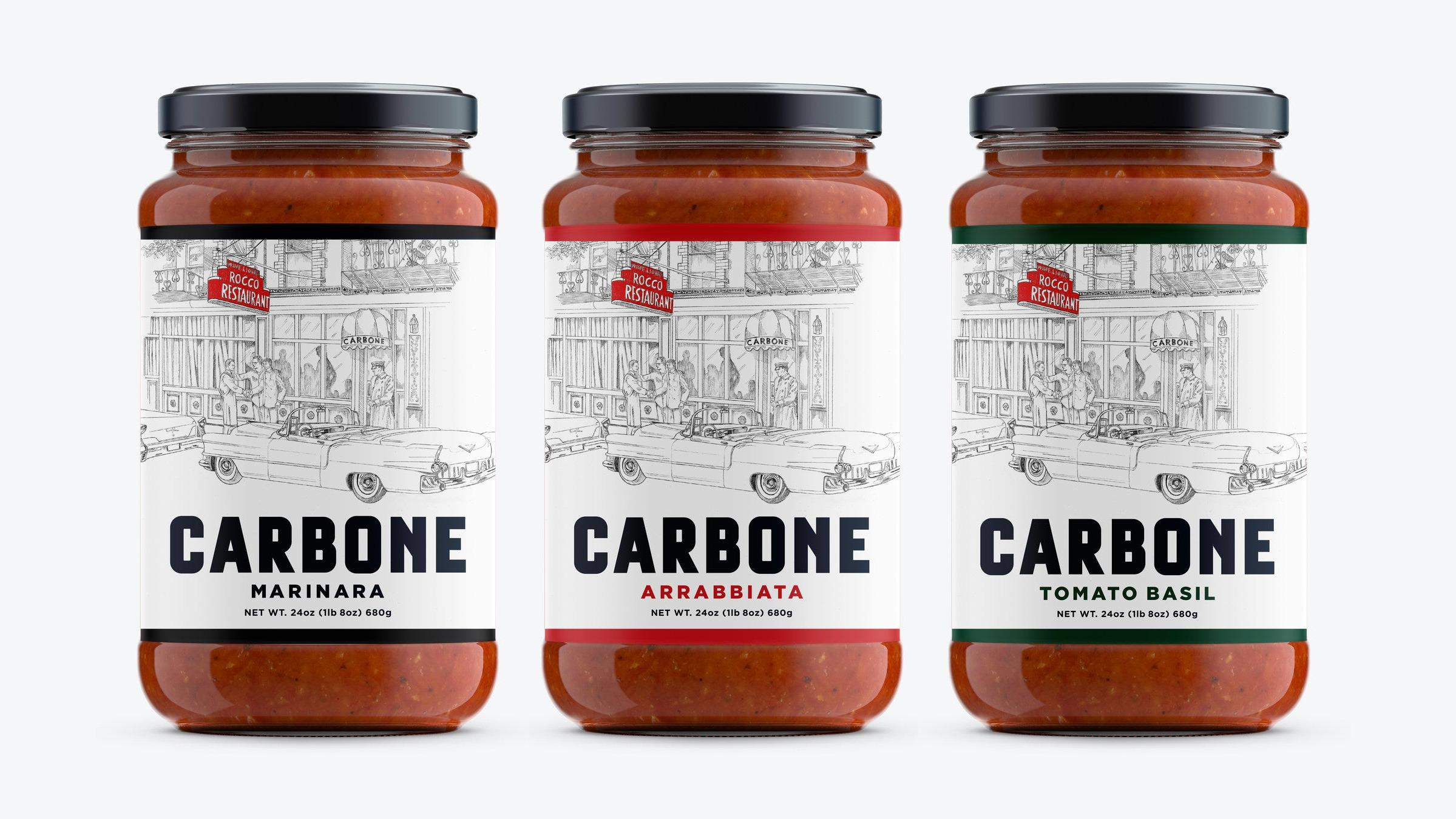The Best Store-Bought Marinara Isn't The One You're Thinking Of
Professionals all love Rao's, but there's a new contender on the market.
I don't buy jarred red sauce. It's one of those things that I just enjoy making myself, and I never make it the same way twice. I like to experiment with the ingredients: Worcestershire, vinegar, tomato paste, no tomato paste, pork necks simmered in the sauce, different types of canned tomatoes, new combinations of herbs and aromatics—marinara is a lovely, rustic freestyle. Constantly adjusting the acidity, richness, and savory qualities of a good red sauce is fun, whereas jarred pasta sauce is a stable, static product. Except Rao's. This popular brand is lauded by seemingly every food professional who's weighed in on the topic, uncontested on grocery shelves. That is, until Carbone came on the scene in 2021.
Real quick: I'm not out here doing brand deals. I know, I know. You're like, yeah, we weren't worried about that, assface. You have 3,000 followers. You'd be surprised. Companies are even asking people of my status (barely alive) to peddle their products for a few thousand bucks. And I have said no. God willing, I'll keep saying no, too. It's not that I suddenly have this giant hard-on for journalism or even integrity. It's more about wanting my words and opinions to mean something. I want you to know that if I talk about something I like, it's because I like it, not because a kelp chip company paid me to say, "Mmmm! Kelp!"
Why Rao’s sauce is so good
Back to Rao's sauce. It's very good, so let's celebrate it. The tomatoes are lovely and flavorful. You can taste the richness from the emulsified olive oil as it infuses a healthy sheen of fat. Rao's also uses fresh basil and oregano, so you get that wonderful fresh herb taste and not the dusted, dry oregano flavor that's impossible to dissociate from Prego.
The factor that sets Rao's apart is just how smooth it is. Though there's no butter in the ingredients list, it feels like this sauce was finished in monter au beurre style. It's almost creamy. There's no citric acid in Rao's, either, so there's no harsh or acrid note—just simple, lovely, and deeply flavorful like you made it.
It's amazing that a sauce like this exists. When compared to a homemade marinara, it feels nearly identical, just somehow scaled to mass production. That's why it resonates with people so much: It's like their dang grandma cooked it.
Why Carbone sauce is different
Rao's is a sauce released by the famous NYC restaurant of the same name, and Manhattan restaurant Carbone has decided that two can play at that game, releasing its own line of pasta sauces in March of 2021.
While Rao's does hit the homely, rustic, Sunday red sauce aesthetic, Carbone tastes both intimate and fancy. It's got that vibe like it's been stirred with the same wooden spoon your nonna has used for the last thirty years. More acutely, there's a little something extra savory about Carbone sauce, like the tomatoes have been cooking for hours and hours in a small pot, unlocking additional caramelized and smoky flavors. It tastes meaty without using meat, almost delving into ragu territory or a pot of Sunday gravy that's been left on the stove overnight.
When tomatoes cook for a long time, the carbohydrates caramelize and release savory, "brown" flavors. That's the flavor profile I get from Carbone sauce, and it's absolutely singular in the jarred red sauce game. If Rao's tastes like you made it, then Carbone tastes like a chef did.
The ingredients in Carbone sauce are almost identical to Rao's, though I have a hunch that Carbone is either using a higher quality of tomato or those tomatoes are simply cooking longer. A jar of Carbone marinara lists Italian tomatoes (whole peeled tomatoes, tomato puree, sea salt, basil), onions, olive oil, sea salt, basil, garlic, and oregano. On the Carbone website, there's a video showing chef Mario Carbone picking the tomatoes from the San Marzano region of Italy and being a part of the canning process, though the tomatoes themselves aren't explicitly listed as "San Marzano" on the Carbone sauce label.
Everything in a jar of Carbone sauce is perfectly blended and emulsified, with a powerful, pungent taste. It's dark, chunky, and intense. Last time I had a jar in my fridge, I would periodically take a spoonful of the stuff straight to the mouth for a coked-up flavor rush. While Rao's makes me feel warm and comforted, but Carbone excites my palate and makes me feel alive.
In short, it feels like the kind of sauce you get from an elite Italian restaurant. The smoky, brown, compressed, meaty flavor of the tomatoes can't be overstated. While garlic, herbs, and oil all play a part, this marinara places a singular focus on the wonderful tomato.
Carbone vs. Rao’s sauce
I did a side-by-side taste test between Carbone and Rao's, and I can tell you with certainty that I prefer Carbone. It has a bit more natural sweetness, the aforementioned savory quality, and a darker, richer taste. It's a game changer in the jarred pasta sauce space.
Carbone has been on the scene for less than a year. The price is comparable to Rao's, though probably a bit more expensive; you're paying anywhere from $8-$10 for a jar of the stuff. But that's not so unreasonable when you think about buying San Marzano tomatoes, fresh basil, and oregano to make your own. Given Carbone's high attention to detail, this is a sauce that you can't recreate at your stove, and it gives everyone's favorite store-bought brand a run for its money.
